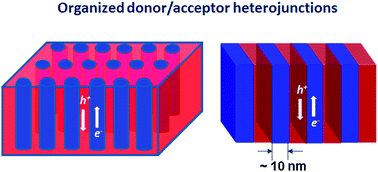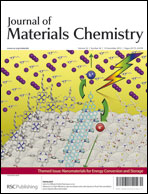Top-down meets bottom-up: organized donor–acceptor heterojunctions for organic solar cells
Abstract
Solar cells involving organic small molecules and

- This article is part of the themed collection: Nanomaterials for Energy Conversion and Storage

 Please wait while we load your content...
Please wait while we load your content...